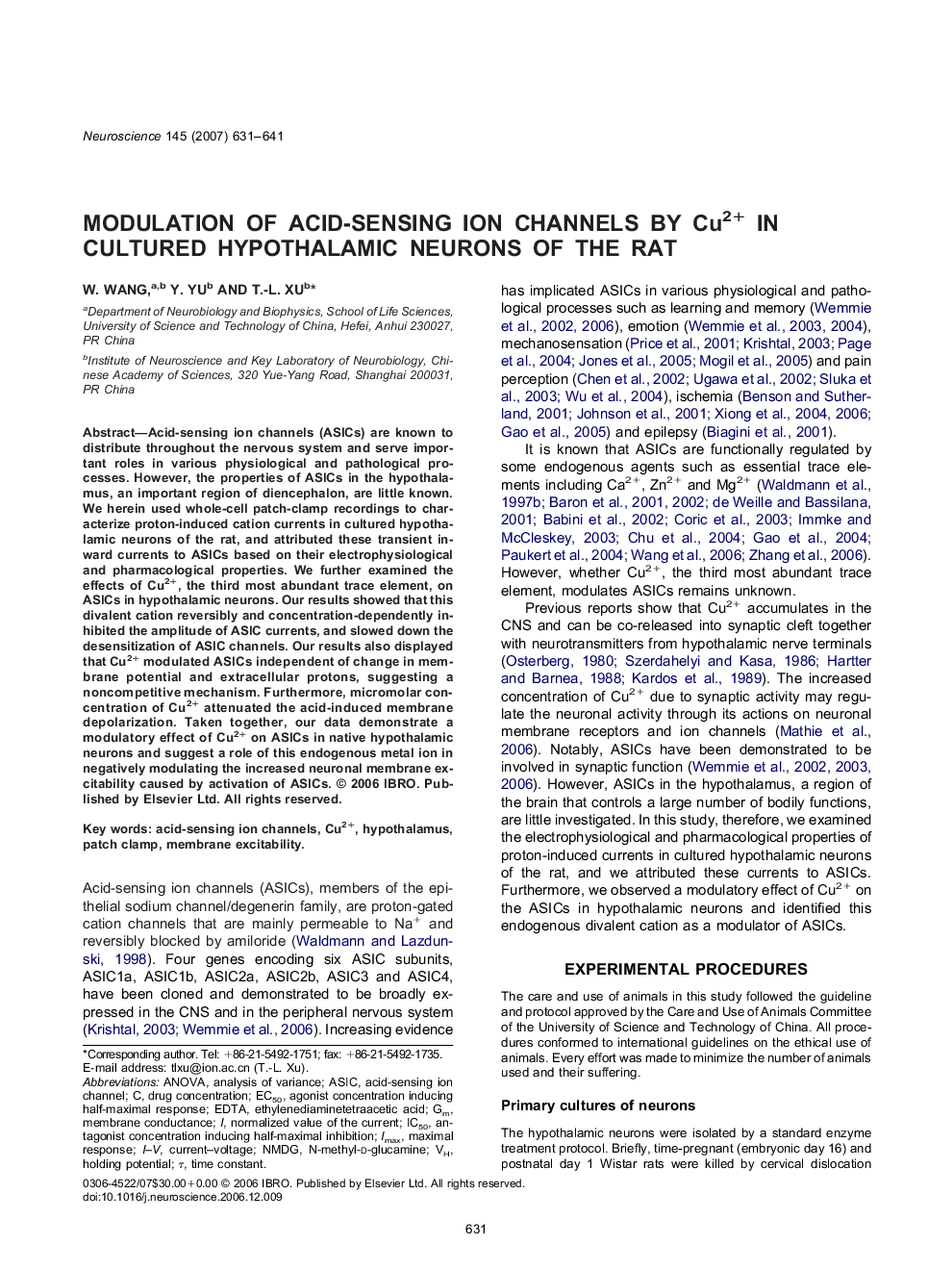| Article ID | Journal | Published Year | Pages | File Type |
|---|---|---|---|---|
| 4342737 | Neuroscience | 2007 | 11 Pages |
Acid-sensing ion channels (ASICs) are known to distribute throughout the nervous system and serve important roles in various physiological and pathological processes. However, the properties of ASICs in the hypothalamus, an important region of diencephalon, are little known. We herein used whole-cell patch-clamp recordings to characterize proton-induced cation currents in cultured hypothalamic neurons of the rat, and attributed these transient inward currents to ASICs based on their electrophysiological and pharmacological properties. We further examined the effects of Cu2+, the third most abundant trace element, on ASICs in hypothalamic neurons. Our results showed that this divalent cation reversibly and concentration-dependently inhibited the amplitude of ASIC currents, and slowed down the desensitization of ASIC channels. Our results also displayed that Cu2+ modulated ASICs independent of change in membrane potential and extracellular protons, suggesting a noncompetitive mechanism. Furthermore, micromolar concentration of Cu2+ attenuated the acid-induced membrane depolarization. Taken together, our data demonstrate a modulatory effect of Cu2+ on ASICs in native hypothalamic neurons and suggest a role of this endogenous metal ion in negatively modulating the increased neuronal membrane excitability caused by activation of ASICs.
